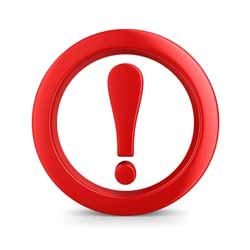Hygiene and Health Regulations in a Kitchen
To have a successful chef job or cook job in any food establishment you have to make sure that you follow and enforce the standard safety procedures and health regulations that are put in place for the protection of the customers and yourselves as chefs.

A health certificate is needed for every food establishment to say that the food you are serving is clean, healthy and the kitchen is completely hygienic. This gives customers peace of mind knowing that there are not rats or other bugs in the kitchen, and it will also prevent lawsuits should an issue arise. If you don’t have a health certificate, you don’t have a leg to stand on, so this is the first thing you need to get before you open your doors as a restaurant owner.
Now of course after a few months of being in business, things are bound to get chaotic and you do not have a health inspector coming around every day to check on you, so as a responsible chef, food supervisor, food establishment manager, or owner, you must make sure that all the correct kitchen hygiene protocols and food safety regulations are being adhered to. These rules should be placed up on a wall in the kitchen where all the kitchen staff and chefs can see it and it is simple hygiene rules that you would follow in your own home. Basics like keeping your station clean and disinfected, making sure that the dishes are washed in clean soapy water, having a clean uniform and chef hat on at all times, and washing your hands between making meals and from when you work with raw meats to other foods, are just some of the hygiene elements you can do every day easily. For hand washing, every kitchen should have a special hand washing basin and for washing dishes, there must be a double sink or a single with an industrial or large dishwasher.
The food safety regulations also include rules that you have to have in a kitchen in the way it is constructed and designed, for example having separate areas in the kitchen for “dirty” work such as dirty dishes and equipment and raw foods that are being prepared, and the ready to eat, complete meals and dishes. Then you also have to follow the following regulations for the floors and walls as set out by the health inspector. The floors and walls must be easy to clean. “Impervious, non-absorbent, non-slip, washable surfaces must be provided.” For the walls, the paint must be able to handle heat where there are hot cooking surfaces and must be resistant to splashes. The floors must have welded or sealed joints and preferably coved skirtings must be used. The ceilings should also be impervious and must reduce the amount of condensation. Any woodwork must also be made so that it remains as dirt free as possible and non-absorbent.
Another food safety regulation that must be followed is the lighting. You have to have adequate artificial lighting in various areas of the kitchen, such as above the stove, serving area, preparation areas, storage areas and any work counters. All kitchens must also maintain their hygiene by installing the correct amount of ventilation systems, whether they are mechanical or natural. For hygiene your food supervisor or manager must also check all the equipment and tools that you make the food to make sure that they are clean and in good working order.
The health inspector will check all of these things when visiting your kitchen so your food establishment is always safe and healthy for preparing and making food. Another important thing that you need is plenty of refrigeration and storage for all your ingredients and fresh produce.


 Teach English in Asia
Teach English in Asia  Cruise Ship Jobs
Cruise Ship Jobs  Alaska Fishing Industry Jobs
Alaska Fishing Industry Jobs  Sharing Economy / Gig Economy
Sharing Economy / Gig Economy